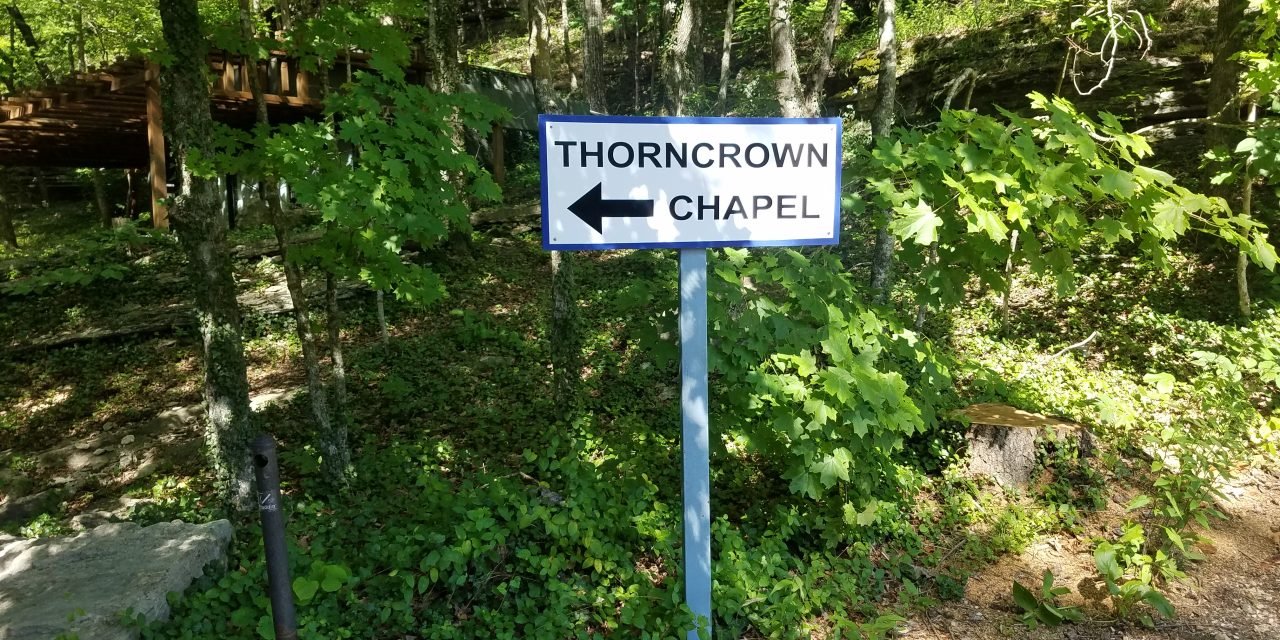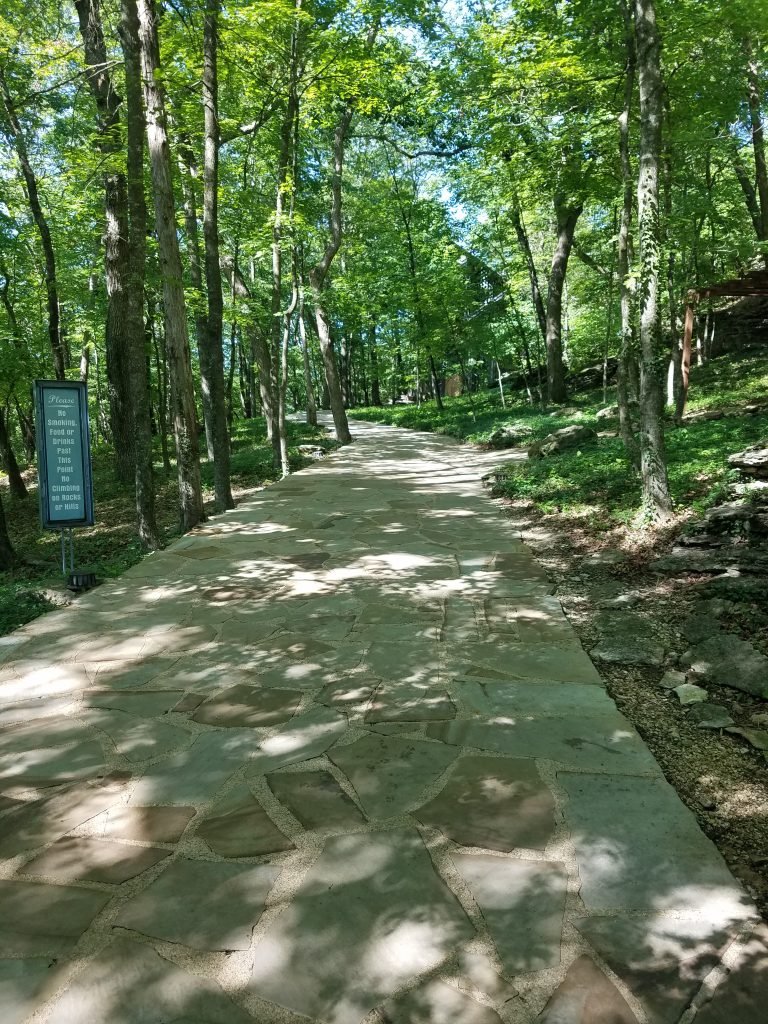
Ozarks Inspiring Thorncrown Chapel

When I arrived at Inspiration Point for my first summer of performing with Opera in the Ozarks, I knew that at least some of my time would be spent exploring the gorgeous scenery around me. Driving the curving mountain roads, going for my daily runs, and strolling through the hilly, winding streets of downtown, I felt a profound peace settle over me as I relaxed into the feeling of the aptly named Inspiration Point. This place was truly chock full of inspiration and charm: a musician’s dream!
On one of my earliest drives into nearby Eureka Springs, I rounded a sharp curve and passed a wooden sign that read simply “Thorncrown Chapel.” With no hours visible, just a smaller sign that reads ‘open’ or ‘closed,’ I was forced to rely on my limited WiFi and the powers of Google to learn more. I soon realized that this simple sign represented a truly magnificent work of architecture and a must-see attraction! Because my father is an architect, I quickly called him to ask if he knew of the chapel. As it turned out, he did and informed me that I needed to go and see it ASAP! A Frank Lloyd Wright fan himself, my dad knew this building was designed by E. Fay Jones, a former student and apprentice of Frank Lloyd Wright.
Built in 1980, the structure is made primarily of wood and glass, with a flagstone floor; Jones followed Wright’s belief in architecture that blended with its environment and worked with, not against, its surroundings.
Thorncrown Chapel’s website provides the following quote from Jones: “I saw opportunity here to create architecture. The distinction I am making is that all building isn’t architecture, just as all writing isn’t literature or poetry, even though the spelling, grammar, and syntax might be correct. There is something in architecture that touches people in a special way, and I hoped to do that with this chapel.”
A winding driveway to a parking lot followed by a short trek through the woods leads up to the isolated chapel. Sunlight filtering through thick trees creates varying shadows and shifting layers of depth as you walk. Visitors are asked to keep quiet out of respect inside the chapel, so the area around feels hushed as well, despite the many visitors. Out of the woods, the chapel rises nearly 50 feet high, seeming to blend in with the wild trees surrounding the structure. Made primarily of wood and glass, numerous windows invite the Ozark landscape inside. Shadows and sunlight filtering through the glass mean Thorncrown Chapel subtly changes its appearance with the movement of the sun and shifting winds. Guests are welcomed by volunteers or church staff and asked to sit so as not to block the view for others observing. You may stay as long as you like to look around the interior and appreciate the unique environment. Information is provided about the building’s construction and about its architect on pamphlets and the chapel’s website.
Local man Jim Reed originally purchased the land that now houses the chapel as the future site of his retirement home in 1971. Evidently, Jim and his wife noted frequent visitors to their land, leading him to decide he should build an inspirational structure on the site so that people had a place to appreciate the environment. He soon met up with architect E. Fay Jones, then a professor at the University of Arkansas, and Jones agreed to design the chapel. The Sainte Chapelle-inspired chapel finally opened on July 10, 1980 and received a listing on the National Register of Historic Places in the year 2000, a mere 20 years after it opened. This is a hushed, magical place, full of wonder and simple beauty, often listed as one of the most beautiful and inspiring chapels in the world. ‘Ozark Gothic,’ Jones called it. I have to agree.
Though the chapel doesn’t charge admission, they do ask for donations, used in the upkeep of the chapel and grounds. Northwest Arkansas’s architectural gem is certainly worth the trip!
To learn more about Thorncrown Chapel visit thorncrown.com.
















![The Ultimate Valentine’s Day Love Potion: Gancia Prosecco Rosé [COCKTAIL TIME]](https://luxebeatmag.com/wp-content/uploads/2022/02/Gancia_NO_RAYS_Grey_BG-440x264.jpg)






















